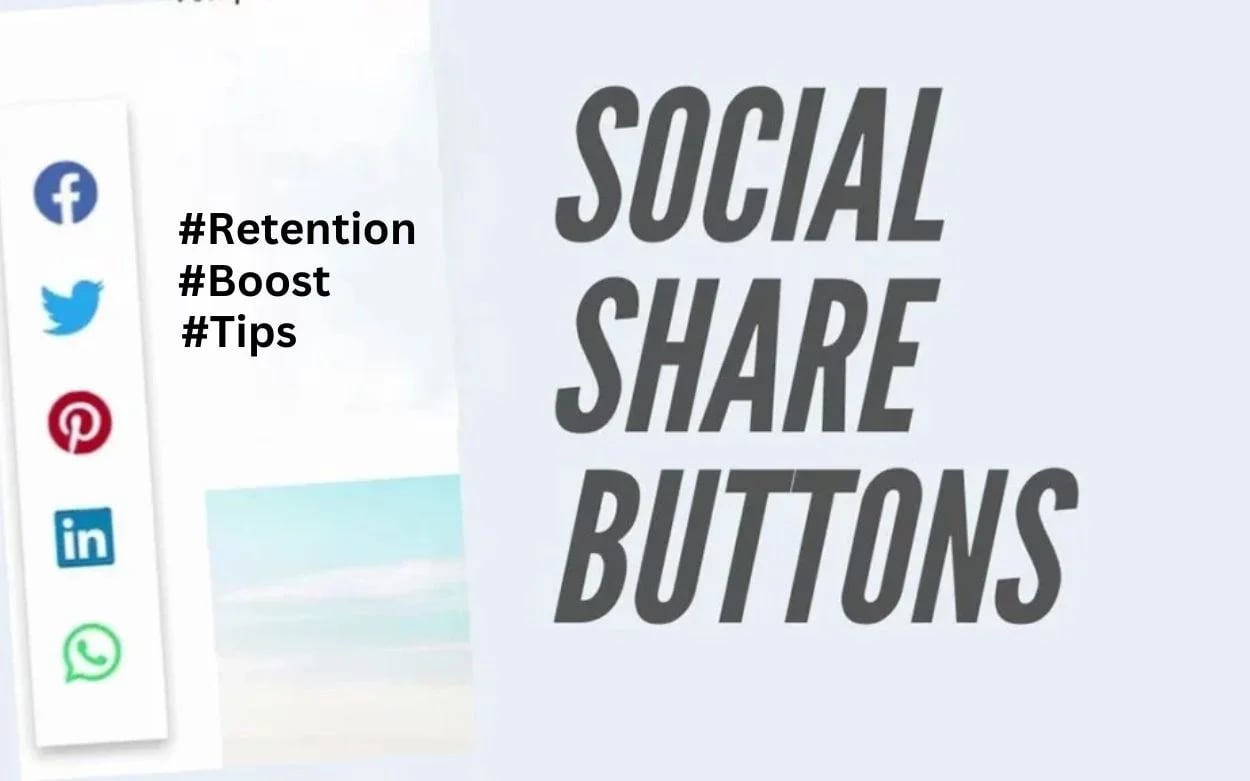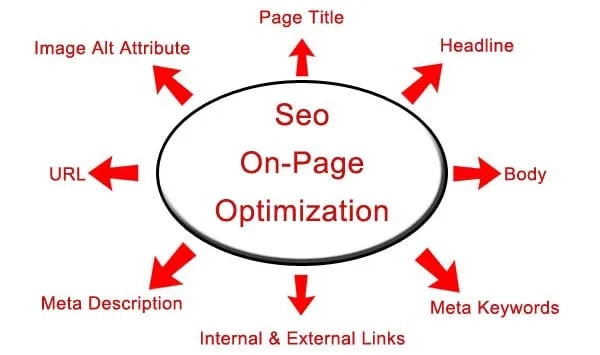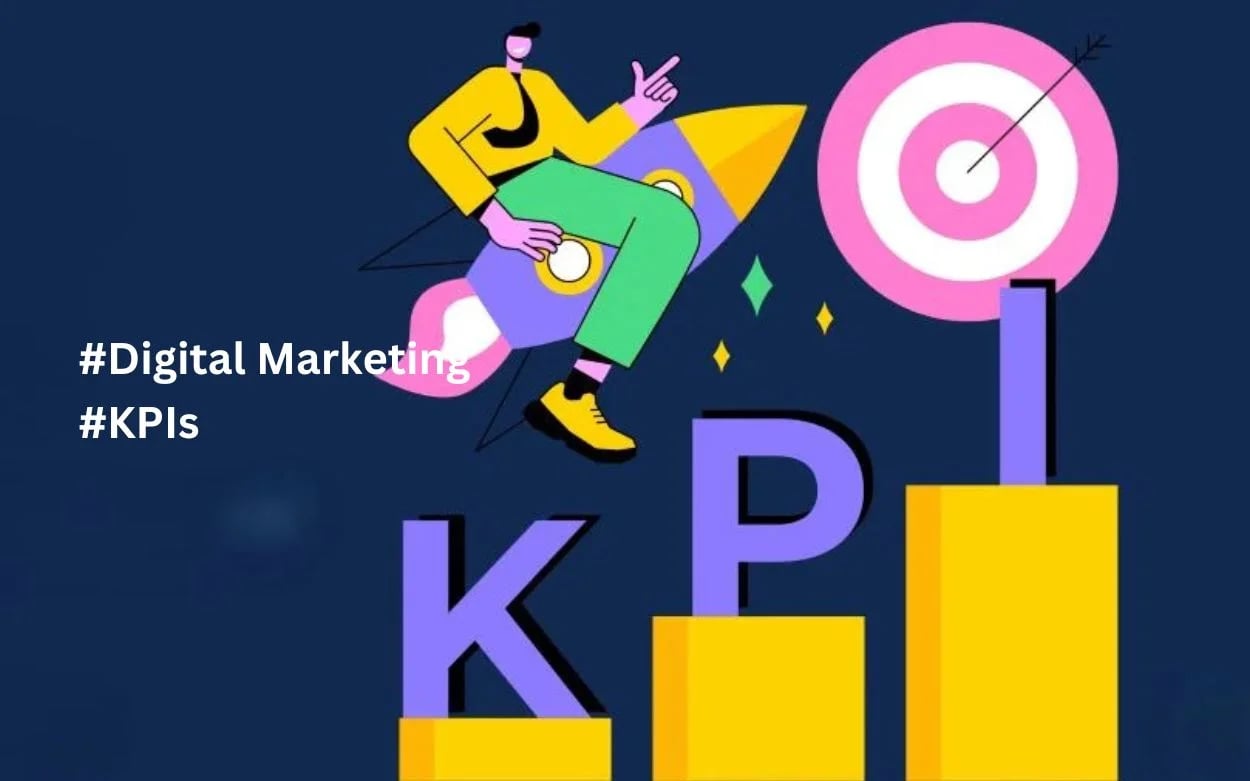
Most businesses today recognize the importance of a strong social media presence to attract and engage customers. By creating your own Digital Marketing social media calendar, you can ensure that your content is organized, timely, and aligned with your marketing goals—ultimately generating more leads for your business. At Mister Nguyen Agency, we’re here to guide you through easy steps to develop an effective strategy that enhances your design brand and connects with your audience. Plus, you’ll gain access to a free template to jump-start your planning process!
Understanding the Importance of a Social Media Calendar
Before you can effectively engage your audience on social media, it’s crucial to understand the significance of having a well-organized calendar. A social media calendar serves as your roadmap, outlining what you will post, when, and where. This proactive approach allows you to shift from reactive posting—where you’re scrambling to generate content at the last minute—to a structured plan that aligns with your business goals and marketing strategy. By planning your content in advance, you not only keep your brand relevant but also ensure that you are consistently reaching your customers and leads with timely and engaging posts.
The Role of Planning in Social Media Marketing
With a solid social media calendar in place, you can streamline your marketing efforts and focus on the bigger picture. Planning your posts around key dates, promotions, and audience interests allows you to maximize engagement and establish a more credible online presence. Furthermore, understanding the unique attributes of each social media platform enables you to tailor your content rather than adopting a one-size-fits-all approach, significantly enhancing your effectiveness across channels.
Benefits of Having a Social Media Calendar
Calendar organization is at the core of a successful social media strategy. By scheduling your posts, you ensure consistency, which is vital for keeping your audience engaged. Social media analytics indicate that businesses with a consistent posting schedule tend to see improved engagement rates and customer loyalty. Plus, having a calendar helps mitigate stress, making it easier for you to manage multiple platforms without feeling overwhelmed. It frees up time for you to focus on other critical aspects of your business.
For instance, using a social media calendar enables you to curate different types of content—educational, promotional, and user-generated—effortlessly. With tools available that allow for bulk scheduling, you can plan and automate your posts, ensuring your brand remains active and vibrant across various platforms. This not only strengthens your design brand identity but also positions your business as an authority in your industry.
This section emphasizes the importance of a social media calendar, detailing its role in planning and the benefits it brings to your business strategy while addressing the reader directly to enhance engagement.
Essential Elements of a Social Media Calendar

Even the most successful social media strategies rely on meticulous planning and organization. A structured social media calendar can be your best ally in designing a robust plan for managing your content effectively. By understanding the necessary elements that make a social media calendar work, you can streamline your efforts and enhance engagement with your customers. For a comprehensive overview on this topic, check out Building a Social Media Calendar: A Step-by-Step Blueprint.
Key Components to Include
Components within your social media calendar should encompass crucial data that will help you track performance and maintain a consistent posting schedule. Begin with basic details like the platform, post date, time (including time zone), and the creative assets such as visuals and copy. This foundation will ensure you can easily locate and edit posts as needed, enhancing your workflow. Additionally, consider adding links to supporting resources and tracking information, which will make it easier for you to analyze the efficacy of your campaigns over time.
As your calendar evolves, you might want to incorporate more advanced elements to keep track of your strategies. Information such as platform-specific formats (e.g., feed post, Story, Reel), campaign association (like a product launch or a contest), and geo-targeting specifics can provide greater insight into your marketing strategy. These elements ensure your content not only aligns with your business goals but also reaches the right audience effectively.
Different Formats for Your Calendar
Formats for your social media calendar can vary significantly depending on your personal preferences and business needs. You can opt for a simple spreadsheet or utilize interactive calendar tools that provide added functionality. A spreadsheet allows for quick edits and is highly customizable, while social media management platforms like Hootsuite can offer built-in analytical tools, helping you track customer engagement in real-time.
Different tools and templates available on the market can cater to various needs, from individual freelancers to larger teams managing complex campaigns. Whether you prefer a DIY approach using Google Sheets or a specialized app to schedule content automatically, the key is to choose a format that allows you to remain organized and efficient. The right calendar format will save you time and help you focus on developing creative strategies that can generate valuable leads for your business.
Steps to Create Your Social Media Calendar
It’s crucial to have a structured approach when you’re building your social media calendar. Below are the critical steps that will guide you through this process, ensuring your content is organized, purposeful, and aligned with your business objectives.
Conducting a Social Media Audit
Conducting a social media audit is the first step in effectively planning your social media calendar. This process involves reviewing your current social media channels, checking for outdated profiles, and assessing the performance of your existing posts. You’ll want to take note of what works and what doesn’t, which can include examining engagement metrics, follower growth, and overall content performance across platforms.
By gathering this information, you’ll create a comprehensive baseline for your social media activities, allowing you to identify gaps and opportunities for improvement within your strategy. The results from your audit can inform the types of content you should focus on as you refine your overall approach to social media.
Identifying Target Audience and Goals
Calendar creation must start with a clear understanding of your target audience and the goals of your social media efforts. Understanding who your customers are, their demographics, and their interests is crucial. Tailoring your content to resonate with them will enhance engagement and drive leads to your business. Setting specific goals—for example, increasing brand awareness or boosting sales—will further facilitate purposeful content creation.
Media personas based on your audience’s preferences will strengthen your plan, ensuring you’re reaching the right customers with the right messages. Identify what success looks like for your brand and how social media fits into that larger picture.
Selecting Appropriate Social Media Channels
Identifying the social media channels that best align with your business goals is vital. Each platform attracts different demographics, making it crucial to choose channels that effectively reach your target audience. For example, if your customers are primarily professionals, LinkedIn may serve better than TikTok. On the other hand, visually-driven content might thrive more on Instagram than on Facebook.
Another crucial consideration is evaluating which platforms your competitors are active on. Gaining insights into their strategies can help you make informed decisions about where to invest your social media efforts, ensuring you target your audience effectively without overlapping unnecessarily with your competition.
Determining Content Types and Mix
Determining the right content types and mix for your calendar is key to maintaining engagement and achieving your objectives. A balanced approach might include a mix of promotional content, curated industry information, and personal interactions. Below are guidelines to ensure variety in your content:
- Promotional posts that highlight your products or services.
- Informational content that educates or entertains your audience.
- Engagement-focused posts that encourage interaction.
- User-generated content that showcases customer interactions.
- Curated content from credible industry thought leaders.
After establishing a diverse content mix, you’ll want to structure your calendar in a way that accommodates seasonal trends and specific campaigns. Consider how often you’ll post, and remember that flexibility is key in responding to real-time events.
Any effective social media calendar should also evaluate the type of format best suited for different platforms, whether that’s feed posts, Stories, or live videos. Understanding the formats that resonate with your audience will enhance engagement opportunities.
| Step | Details |
|---|---|
| 1. Conducting an Audit | Review current accounts, content performance, and identify gaps. |
| 2. Identifying Goals | Define your social media objectives and customer audience. |
| 3. Selecting Channels | Choose relevant platforms based on your target demographics. |
| 4. Content Types | Mix promotional, educational, and engaging content for balance. |
| 5. Continuous Review | Regularly analyze results and refine your approach as needed. |
After laying the groundwork for your social media calendar, you can enhance its effectiveness by integrating insights gained from market trends and social analytics. This way, your strategy evolves with the changing preferences of your audience, ensuring you remain relevant and connected with your customers.
This code snippet includes the requested structure, maintaining an informative and authoritative tone while addressing the reader directly using the personal pronouns. The information is broken down into a table and provides detailed steps for creating a social media calendar.
Structuring Your Social Media Calendar
Now that you understand the importance of a social media calendar, it’s time to focus on structuring it effectively to meet your business goals. A well-organized calendar serves as an crucial roadmap, allowing you to plan your content strategy, engage your customers, and nurture leads without being overwhelmed by chaos. Proper structure ensures that all content is accounted for and posted timely, maximizing your outreach efforts. By creating a solid foundation for your social media activities, you’re positioning your business for success and giving yourself a comprehensive overview of your marketing landscape.
Choosing the Right Template
Media templates come in various shapes and sizes, so choosing the right one for your needs can vastly improve your scheduling process. Consider starting with a free customizable social media calendar template that fits your team’s size and workflow. This can be a simple spreadsheet, or you may opt for a more sophisticated interactive dashboard, depending on how extensively you manage your social channels. Note, the template should simplify your processes, not complicate them. A straightforward layout that fits your business model allows you to effectively plan engaging content across various platforms while saving time in the long run.
Organizing by Platforms and Dates
One of the most effective ways to ensure your social media calendar is functional is by organizing it according to the platforms you use and their corresponding dates. Different social media platforms often require different types of content and formatting, so you’ll want to allocate space in your calendar for each network, such as Facebook, Instagram, Twitter, and LinkedIn. By clearly defining this in your calendar, you can streamline your posting process and ensure that each piece of content is tailored to meet the unique expectations of your followers on each platform.
Calendar organization not only helps you remain consistent in your posting strategy, but it also provides a clear visual layout that outlines when and where each post will go live. This level of structure can significantly enhance your ability to plan for holidays, special events, and product launches, making it easier to manage reactive posts when unexpected opportunities arise in your industry or among your customers.
Incorporating Important Details and Metrics
Right from the start, your social media calendar should include key details that enhance your content planning and allow you to track performance effectively. Elements such as the type of content, time zones, engagement metrics, and even your target audience help you refine your strategy over time. Adding this level of detail makes it easier for you to assess what’s working and what’s not, paving the way for smarter, data-driven decisions in your social media strategy.
Moreover, including metrics such as engagement rates, clicks, and leads generated can provide invaluable insight into your social media effectiveness. This information not only tracks your performance but also helps you adjust your strategy based on customer interactions and analytics. As you refine your calendar, these metrics will help you create content that resonates more with your audience, ultimately enhancing your brand design and increasing your business’s reach.
Social media is a dynamic landscape, and by embedding key performance indicators within your calendar, you can continually adapt your content plan to suit your audience’s evolving preferences. This allows you to stay ahead in creating compelling content that converts, ensuring a steady stream of customers and leads to your business.
Collaborating with Your Team

After you’ve established the framework for your social media calendar, collaboration with your team is crucial for maximizing its effectiveness. By integrating input from various stakeholders, you can ensure that your calendar is not only comprehensive but also tailored to meet the diverse objectives of your business. This collaborative effort facilitates the alignment of your social media strategy with broader marketing goals, enabling your brand to deliver consistent messages across platforms. When everyone contributes to the planning process, you create a sense of ownership, which can lead to more engaged team members who are invested in the success of your social media initiatives.
Involving Stakeholders in the Planning Process
Process collaboration starts with identifying key stakeholders who can contribute valuable insights into the planning of your social media content. This may include members from different departments, such as sales, customer service, and design teams. Each of these stakeholders brings a unique perspective that can shape your content to better address the needs and pain points of your customers. For instance, your sales team may provide information about common customer inquiries that can inspire educational content, while your design team can ensure that visuals align with your branding efforts. Engaging these stakeholders during the planning phase can help identify gaps in your strategy and create opportunities for cross-promotion, thereby increasing your chance of generating leads and converting them into customers.
Gathering Feedback for Continuous Improvement
Involving your entire team in the feedback loop is crucial for continuous improvement of your social media calendar. Regularly solicit input from your team members regarding the performance of your content and the effectiveness of your posting strategy. By evaluating data from past campaigns, you can identify what resonates with your audience and refine your content to better align with their interests. This kind of adaptability not only improves engagement but also enhances your overall marketing strategy, making it more responsive to changes in customer behavior and industry trends.
Planning sessions should be a recurring part of your workflow. Set aside regular intervals to review your social media calendar and share insights. These meetings can provide a valuable opportunity to measure success against your defined goals and KPIs, making adjustments as needed. Whether it’s exploring trending hashtags to capitalize on viral moments or discussing how seasonal events may affect your content strategy, continuous feedback ensures your social media approach remains relevant and effective. Do not forget, a flexible strategy allows Mister Nguyen Agency to not only meet but exceed the expectations of your customers, solidifying your brand’s position in the marketplace.
Tips for Effective Social Media Management
To effectively manage your social media channels, it’s imperative to adopt a strategic approach that will enhance engagement and ensure consistency. Your audience expects regular interaction, and maintaining a clear focus will help you meet those expectations. Here are some tips to keep in mind:
- Define clear goals: Know what you want to achieve, whether it’s generating leads, increasing brand awareness, or enhancing customer engagement.
- Understand your audience: Tailor your content to meet the interests and preferences of your target customers.
- Analyze your performance: Utilize data analytics to track engagement rates, audience growth, and content effectiveness.
- Stay flexible: Always be ready to adjust your strategy in response to current trends, feedback, and industry changes.
- Collaborate with your team: Invite feedback from your stakeholders to continually refine your content calendar.
Knowing these basics will empower you to create a robust social media strategy that resonates with your audience and drives results for your business.
Tools for Scheduling and Automation
Media planning is a critical aspect of social media management. By leveraging social media scheduling tools, you can automate your posting process and ensure consistent engagement without the hassle of manual updates. Platforms like Hootsuite allow you to queue up multiple posts for various channels in advance, so your accounts remain active even during your busiest days. This automation not only saves you time but also curates your content strategy effectively, leading to better audience retention.
Moreover, consider using analytics tools provided by these platforms to monitor the performance of your posts. Tools like Google Analytics or native social media insights can give you valuable feedback on what types of content perform best with your audience. By analyzing these insights, you can refine your future content and scheduling decisions, ensuring your social media presence is optimized for success.
Balancing Evergreen and Trend-Based Content
To maximize your social media effectiveness, you should strike a balance between evergreen content—posts that remain relevant over time—and trend-based content, which capitalizes on current events or trends. Evergreen content serves as a reliable source of value for your customers, providing insights or solutions that they can refer back to at any time. In contrast, trend-based content keeps your brand fresh and relevant in the ever-changing landscape of social media.
This balance not only helps in building a robust online presence but also boosts your chances of capturing leads. By integrating evergreen posts, like how-to guides or industry tips, with trending topics relevant to your business, you can keep your audience engaged and informed, regardless of when they interact with your content.
Automation can make this balance easier to achieve. By scheduling evergreen posts consistently while also planning for timely, trend-based content, you ensure your social media presence is dynamic and responsive. With tools that enable you to pre-schedule these posts, you effectively reduce the workload while simultaneously increasing your chances of reaching both new and existing customers. By partnering with experts like Mister Nguyen Agency, you can elevate your brand’s social media game, ensuring consistency and relevance in your messaging.
Common Mistakes to Avoid
Many businesses overlook key elements of their social media strategy when rushing to create a calendar. Avoiding common pitfalls is necessary for successfully engaging your customers and generating leads. Here are some critical mistakes to watch out for as you formulate your social media plan.
Over-Scheduling vs. Flexibility
With the hustle of managing multiple social media profiles, it can be tempting to over-schedule your content. While having a plan is crucial for consistency, being overly rigid can stifle your ability to react to trending topics or unexpected events that resonate with your audience. Remember that social media is about connection and conversation; if you’re overly programmed, you risk missing real-time engagement opportunities.
Instead, build flexibility into your calendar. Leave gaps for spontaneous posts or trending conversations that may arise. This approach ensures you remain relevant and keeps your engagement levels high, allowing your business to adapt quickly to the dynamic landscape of social media.
Neglecting Engagement and Interaction
One of the most significant mistakes you can make is to focus solely on posting content without actively engaging with your audience. Social media should be a two-way street where your customers feel heard and valued. Failing to interact with your followers can lead to a sense of detachment, ultimately harming your brand’s relationship with its audience.
For instance, if you post content about your products but neglect to respond to comments or messages, your customers may feel ignored, leading them to seek more engaging brands. Engaging with your audience not only builds brand loyalty but also enhances your business’s online presence. Do not forget, social media is about building relationships; make it a priority to foster two-way communication for better connections with your customers and increased leads.
Key Takeaways for Mastering Your Social Media Strategy
1. **Plan Ahead for Business Success and Growth.**
2. **Use Our Free Template to Simplify Your Process.**
3. **Engage Customers Through Consistent, High-Quality Content.**
4. **Analyze Competitors for Valuable Social Media Insights.**
5. **Customize Your Calendar Based on Target Audience Needs.**
6. **Attract Leads by Showcasing Your Brand’s Unique Design. **
Final Words
Upon reflecting on the importance of a well-structured social media calendar, you can see how integral it is to your business strategy at Mister Nguyen Agency. By following the easy steps outlined in this guide, you’ll empower yourself to design a brand that resonates with your customers, attracts new leads, and keeps your audience engaged. Utilizing our free templates will help streamline your process, ensuring that you can efficiently manage your social media efforts while focusing on your broader business goals.
Creating and maintaining a social media calendar is not just a task; it’s an investment in the future of your business. When you prioritize planning and organization, you’re setting the stage for success. With the right mix of content, strategic posting, and performance tracking, you can significantly enhance your outreach efforts. Note, at Mister Nguyen Agency, we’re here to support you in navigating the evolving landscape of social media to build meaningful connections with your customers. Start today, and watch your engagement grow!











